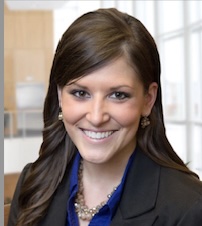This article was originally published in a sponsored newsletter.
Early on, the utilization of myopia control was proposed for kids who were progressing in their myopia year over year. Then, the awareness shifted to the age of myopia onset—no matter the amount of nearsightedness, younger kids needed myopia control more aggressively than kids who became myopic at an older age. Currently, we are amid another round of changes in mindset.
Identifying the Pre-Myope
Given that each diopter of myopic progression increases the risk of myopic maculopathy by 67%,1 eyecare providers should be motivated to identify those at highest risk and intervene early. A pre-myope has a non-myopic refraction, but also has risk factors that indicate a high likelihood of becoming myopic.2 These risks include factors like myopic parental genetics, the visual environment, binocular vision status, and the child’s current refraction.3
When identified, pre-myopes can push off the onset of their myopia by spending time outdoors, at least two hours per day.4 Yam and colleagues have also reported that 0.05% low-dose atropine was effective in delaying the onset of myopia.5
It's No Longer Just About Refraction
The Collaborative Longitudinal Evaluation of Ethnicity and Refractive Error (CLEERE) Study reported a refractive state near emmetropia in children ages 7-11 were highly likely to become myopic.6 However, it also reported that these children had accelerated growth of axial lengths in years prior to them becoming myopic.7 The study found that emmetropes and pre-myopes had similar axial lengths around four to five years prior to myopia onset. At a timepoint three years prior to myopia onset, the future myopes begin to show an acceleration in their axial length, which becomes more pronounced each year.
The most marked change in axial length between the two groups is the year prior to myopia onset. Identifying pre-myopes and monitoring axial lengths can provide additional guidance on the time to intervene. Bringing the focus away from refraction and onto axial length gives providers a repeatable, objective measurement that is tied directly to ocular health risks.8
The Value of a New Mindset
The age at which myopia onsets is correlated with the risk of developing myopic macular degeneration as an adult.9 Identifying pre-myopes and intervening to delay the onset of myopia can push off the onset of myopia and lower that risk. In fact, delaying the onset of myopia by just one year is equivalent to two to three years of myopia control efforts.1
Staying committed to the learning the latest standards and upcoming study data serves as a great way to maximize your patients’ outcomes and differentiate your practice.
References
- Bullimore MA, Brennan NA. Myopia: An ounce of prevention is worth a pound of cure. Ophthalmic Physiol Opt. 2023 Jan;43:116-121
- Flitcroft DI, He M, Jonas JB, et al. IMI – Defining and Classifying Myopia: A Proposed Set of Standards for Clinical and Epidemiologic Studies. Invest Ophthalmol Vis Sci. 2019 Feb 28;60:M20-M30.
- Gifford K. How to identify and manage pre-myopes. Myopia Profile. Available at myopiaprofile.com/articles/identify-manage-pre-myopes. Accessed 2024 Nov 21.
- Shah RL, Huang Y, Guggenheim JA, Williams C. Time Outdoors at Specific Ages During Early Childhood and the Risk of Incident Myopia. Invest Ophthalmol Vis Sci. 2017 Feb 1;58:1158-1166.
- Yam JC, Zhang XJ, Zhang Y, et al. Effect of Low-Concentration Atropine Eyedrops vs Placebo on Myopia Incidence in Children: The LAMP2 Randomized Clinical Trial. JAMA. 2023 Feb 14;329:472-481.
- Zadnik K, Sinnott LT, Cotter SA, et al; Collaborative Longitudinal Evaluation of Ethnicity and Refractive Error (CLEERE) Study Group. Prediction of Juvenile-Onset Myopia. JAMA Ophthalmol. 2015 Jun;133:683-689.
- Mutti DO, Hayes JR, Mitchell GL, et al; CLEERE Study Group. Refractive error, axial length, and relative peripheral refractive error before and after the onset of myopia. Invest Ophthalmol Vis Sci. 2007 Jun;48:2510-2519.
- Chan B, Cho P, Cheung SW. Repeatability and agreement of two A-scan ultrasonic biometers and IOLMaster in non-orthokeratology subjects and post-orthokeratology children. Clin Exp Optom. 2006 May;89:160-168.
- Hu Y, Ding X, Guo X, Chen Y, Zhang J, He M. Association of Age at Myopia Onset With Risk of High Myopia in Adulthood in a 12-Year Follow-up of a Chinese Cohort. JAMA Ophthalmol. 2020 Nov 1;138:1129-1134.




